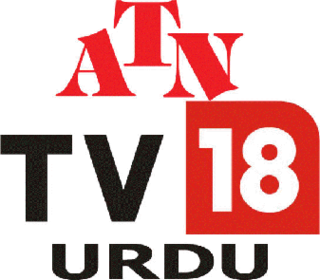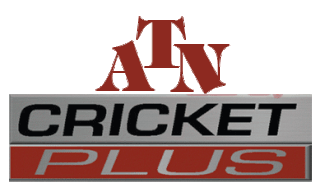Related Research Articles

Family Channel is a Canadian English-language specialty channel owned by WildBrain. The network primarily airs children's television series, teen dramas, as well as other programming targeting a family audience. Despite having its own headquarters in the Brookfield Place office in Financial District, the channel is transmitted from Corus Quay.

Stingray Juicebox is a Canadian discretionary music specialty channel owned by Stingray Group. It is a commercial-free channel that broadcasts music and music videos aimed towards children and teens.
CJCH-DT is a television station in Halifax, Nova Scotia, Canada, part of the CTV Television Network. Owned and operated by network parent Bell Media, the station maintains studios on Robie and Russell Streets in Halifax, and its transmitter is located on Washmill Lake Drive on the city's west side.
Commonwealth Broadcasting Network (CBN) is a Canadian English language discretionary specialty channel owned by Asian Television Network (ATN).

ATN Aastha is a Canadian exempt Category B Hindi language specialty channel owned by Asian Television Network (ATN).

ATN Jaya TV is a Canadian exempt Category B Tamil language specialty channel owned by Asian Television Network (ATN). It broadcasts programming from Jaya TV, a popular television channel from India, and Canadian content.

ATN Movies is a Canadian Category B Hindi language specialty channel owned by Asian Television Network (ATN).

ATN Urdu is a Canadian pay television channel owned by Asian Television Network (ATN). It is an Urdu-language general entertainment network, airing programming that appeals to the entire family including comedies, serials, talk shows, music, religious programs, and more.

ATN Gujarati is a Canadian exempt Category B Gujarati language specialty channel owned by Asian Television Network (ATN).

ATN Bangla is a Canadian exempt Category B Bengali language pay television channel owned by Asian Television Network (ATN).

ATN B4U Music is a Canadian Category B Hindi language specialty channel owned by Asian Television Network (ATN). ATN B4U Music broadcasts music-related programming primarily in the form of a variety of music video-based programs and interview series. Programs are primarily sourced from B4U Music, an Indian-based television channel, in addition to locally produced Canadian content.
Canada is served by various multichannel television services, including cable television systems, two direct-broadcast satellite providers, and various other wireline IPTV and wireless MMDS video providers.

ATN Alpha ETC Punjabi is a Canadian Punjabi-language specialty channel owned by Asian Television Network. It broadcasts programming from India and Canadian content in the form of movies, news, dramas, comedies, and talk shows.

ATN Cricket Plus is a Canadian English language discretionary specialty channel owned by Asian Television Network (ATN). ATN Cricket Plus broadcasts programming related to the sport of cricket including live and tape-delayed matches and news and highlight series.

ATN DD Sports is a Canadian discretionary English language digital cable specialty channel owned by Asian Television Network (ATN). It airs live and tape-delayed Cricket matches as well as other Asian sports such as Kabaddi, Kho-kho, Field hockey, Archery and Badminton. Programming is derived from DD Sports, India's only free-to-air national Sports channel.
A Category C service is the former term for a Canadian discretionary specialty channel which, as defined by the Canadian Radio-television and Telecommunications Commission, operates under the conditions of license for "competitive Canadian specialty services operating in the genres of mainstream sports and national news".

ATN Sony TV is a Canadian exempt Category B Hindi language specialty channel owned by Asian Television Network (ATN). It broadcasts programming from SET Asia as well as Canadian content.
A 9.1(1)(h) order (previously known as a 9(1)(h) order) is an order issued by the Canadian Radio-television and Telecommunications Commission (CRTC) pursuant to section 9.1(1)(h) of Canada's Broadcasting Act. It requires that a particular Canadian television channel is must-carry and distributed by all (or a particular subset of) cable, satellite, IPTV, or similar subscription-based television service providers in Canada. In most (but not all) cases, the order requires that the channel be included in the analogue and/or digital basic service, making it available to all subscribers of that TV service provider. A channel subject to such an order, particularly those subject to mandatory carriage on the basic service, was sometimes known as an 9(1)(h) service.
References
- ↑ "Let's Talk TV - the way forward - Creating compelling and diverse Canadian programming". 12 March 2015.
- ↑ "Types of TV broadcasters". 4 October 2007.
- ↑ "Radio, TV and Cable Broadcasting Services that do and do not need a licence". 3 September 2019.
- 1 2 3 4 "Broadcasting Regulatory Policy CRTC 2016-436". Canadian Radio-television and Telecommunications Commission. 2 November 2016.
- ↑ "Chum complaint "an exercise in turf protection"". Mediacaster Magazine. February 1, 2002. Archived from the original on March 26, 2012. Retrieved March 9, 2019.
- 1 2 Government of Canada, Canadian Radio-television and Telecommunications Commission (CRTC) (2008-10-30). "Regulatory policy - Regulatory frameworks for broadcasting distribution undertakings (BDUs) and discretionary programming services". crtc.gc.ca. Retrieved 2021-05-05.
- 1 2 3 "Broadcasting Regulatory Policy CRTC 2015-86: Let's Talk TV - The way forward - Creating compelling and diverse Canadian programming". CRTC. 12 March 2015. Retrieved 28 July 2015.
- 1 2 3 "Broadcasting Regulatory Policy CRTC 2015-96 - Let's Talk TV - A World of Choice - A roadmap to maximize choice for TV viewers and to foster a healthy, dynamic TV market". CRTC. 19 March 2015.
- ↑ "Conditions of licence for competitive Canadian specialty services operating in the genres of mainstream sports and national news". crtc.gc.ca. CRTC. 2012-05-25. Retrieved 2019-09-27.
- ↑ "ARCHIVED - Conditions of licence for competitive Canadian specialty services operating in the genres of mainstream sports and national news". 4 September 2009.
- ↑ "ARCHIVED - Call for comments on amendments to the Broadcasting Distribution Regulations". 10 December 2010.
- ↑ Maloney, Val. "CRTC to allow ads on pay-TV channels". Kidscreen. Brunico Communications . Retrieved 3 November 2016.
- ↑ "Broadcasting Order CRTC 2012-689: New exemption order respecting certain programming undertakings that would otherwise be eligible to be operated as Category B services, and amendments to the Exemption order respecting certain third-language television undertakings". CRTC. 19 December 2012. Retrieved 23 January 2013.
- ↑ "Exemption order respecting discretionary television programming undertakings serving fewer than 200,000 subscribers". Canadian Radio-television and Telecommunications Commission. 12 March 2015. Retrieved 2018-01-23.